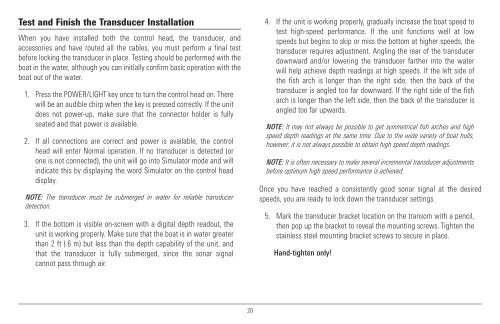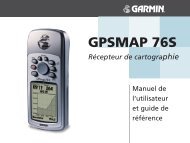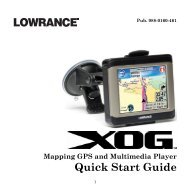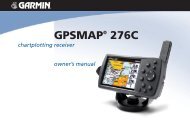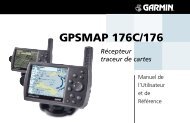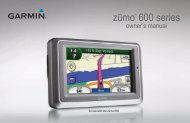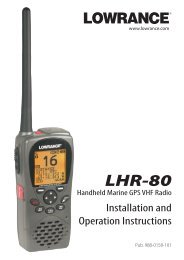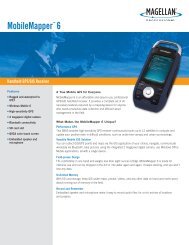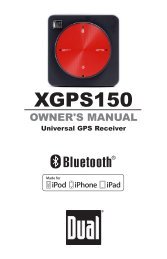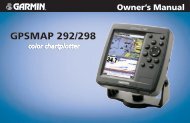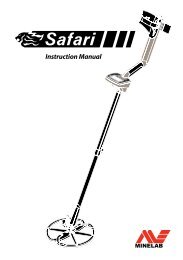Humminbird - Fish Finders and GPS
Humminbird - Fish Finders and GPS
Humminbird - Fish Finders and GPS
You also want an ePaper? Increase the reach of your titles
YUMPU automatically turns print PDFs into web optimized ePapers that Google loves.
Test <strong>and</strong> Finish the Transducer Installation<br />
When you have installed both the control head, the transducer, <strong>and</strong><br />
accessories <strong>and</strong> have routed all the cables, you must perform a final test<br />
before locking the transducer in place. Testing should be performed with the<br />
boat in the water, although you can initially confirm basic operation with the<br />
boat out of the water.<br />
1. Press the POWER/LIGHT key once to turn the control head on. There<br />
will be an audible chirp when the key is pressed correctly. If the unit<br />
does not power-up, make sure that the connector holder is fully<br />
seated <strong>and</strong> that power is available.<br />
2. If all connections are correct <strong>and</strong> power is available, the control<br />
head will enter Normal operation. If no transducer is detected (or<br />
one is not connected), the unit will go into Simulator mode <strong>and</strong> will<br />
indicate this by displaying the word Simulator on the control head<br />
display.<br />
NOTE: The transducer must be submerged in water for reliable transducer<br />
detection.<br />
3. If the bottom is visible on-screen with a digital depth readout, the<br />
unit is working properly. Make sure that the boat is in water greater<br />
than 2 ft (.6 m) but less than the depth capability of the unit, <strong>and</strong><br />
that the transducer is fully submerged, since the sonar signal<br />
cannot pass through air.<br />
4. If the unit is working properly, gradually increase the boat speed to<br />
test high-speed performance. If the unit functions well at low<br />
speeds but begins to skip or miss the bottom at higher speeds, the<br />
transducer requires adjustment. Angling the rear of the transducer<br />
downward <strong>and</strong>/or lowering the transducer farther into the water<br />
will help achieve depth readings at high speeds. If the left side of<br />
the fish arch is longer than the right side, then the back of the<br />
transducer is angled too far downward. If the right side of the fish<br />
arch is longer than the left side, then the back of the transducer is<br />
angled too far upwards.<br />
NOTE: It may not always be possible to get symmetrical fish arches <strong>and</strong> high<br />
speed depth readings at the same time. Due to the wide variety of boat hulls,<br />
however, it is not always possible to obtain high speed depth readings.<br />
NOTE: It is often necessary to make several incremental transducer adjustments<br />
before optimum high speed performance is achieved.<br />
Once you have reached a consistently good sonar signal at the desired<br />
speeds, you are ready to lock down the transducer settings.<br />
5. Mark the transducer bracket location on the transom with a pencil,<br />
then pop up the bracket to reveal the mounting screws. Tighten the<br />
stainless steel mounting bracket screws to secure in place.<br />
H<strong>and</strong>-tighten only!<br />
20


